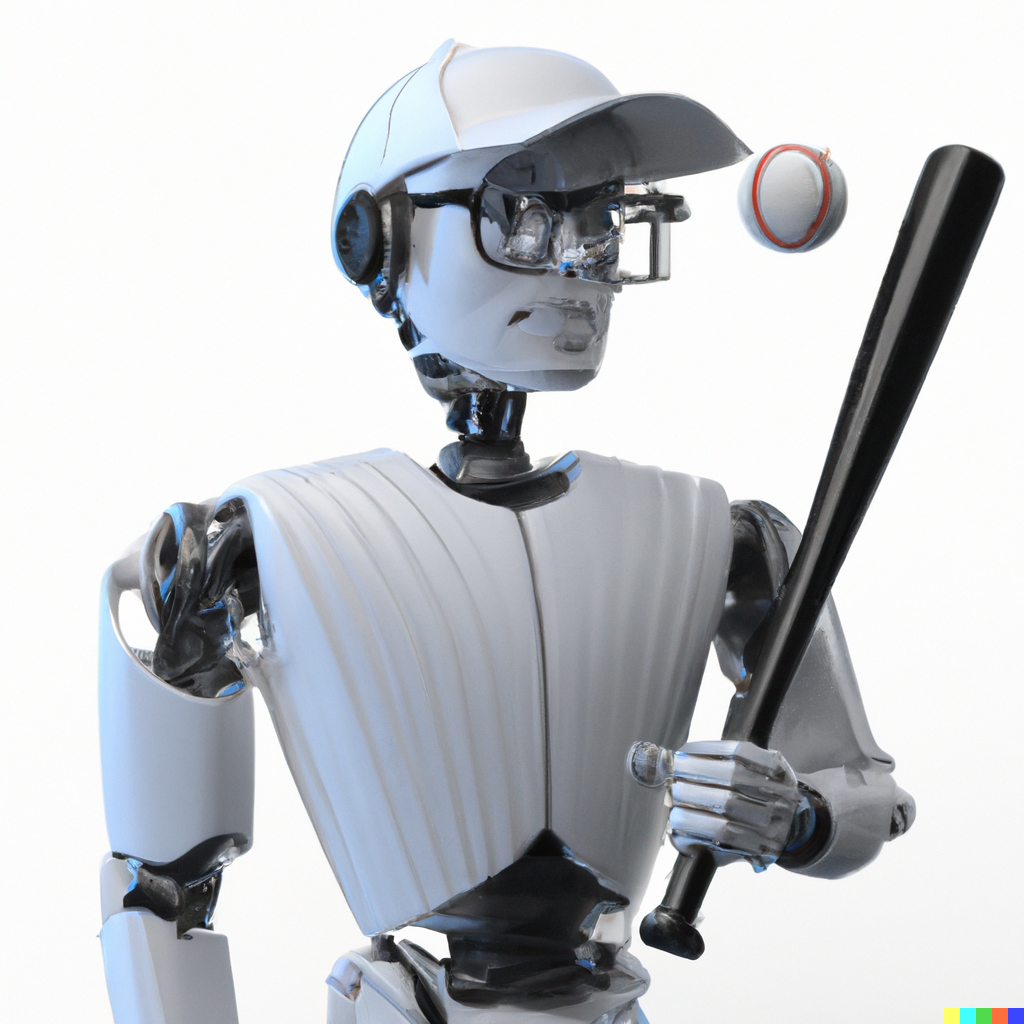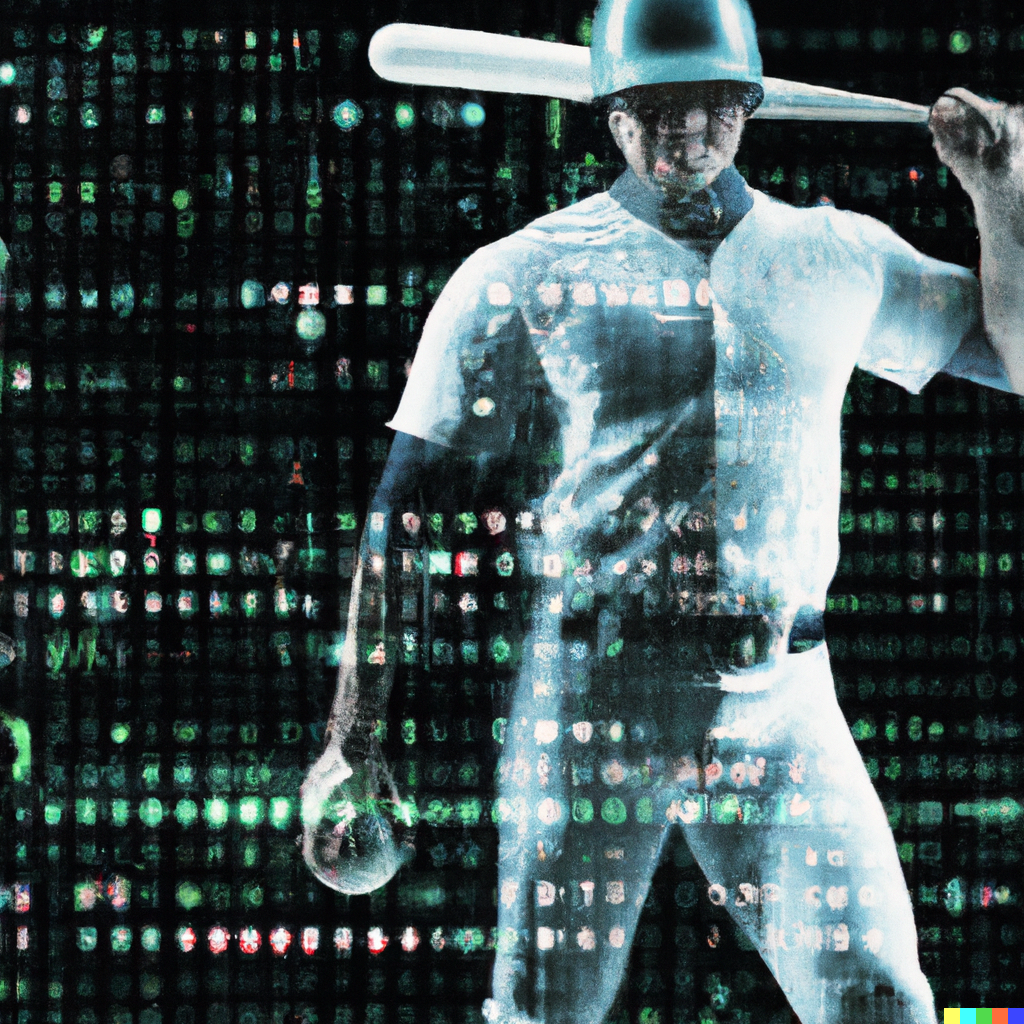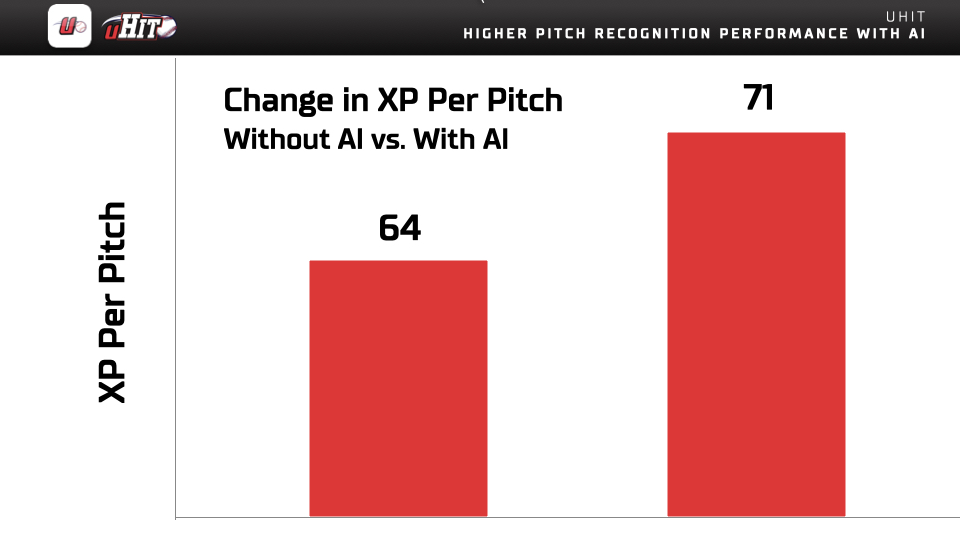AI Hits Baseball Player Development
Player Development Trends in AI
How AI Is Part Of uHIT and Still Has Room To Grow
July 14, 2023

Player Development in Cognitive Training with AI Has Been Here
What difference has it made? Where will it go next?
Baseball America on AI
This is the year AI hits baseball player development. Artificial Intelligence, or AI, is being talked about in one of the centers of player development reporting, Baseball America. Baseball America ran a cover story on AI with a section quoting replies from ChatGPT on the topic.
Baseball America asked: “Can you explain in detail how AI can optimize player training and health?”
ChatGPT’s answer: ” … AI can be used in player recover and training in several ways. Here are some key ways in which AI can be used: …
Customized training programs: AI can be used to analyze player performance data and create customized training programs that are tailored to each player’s individual needs.”
Does uHIT Live Up To ChatGPT’s Vision of Player Development?
uHIT Was First About Getting Reps
uHIT first hit the App Store in December 2016 under the company name, deCervo. Later that summer, it took on the brand identity it carries today, as uHIT. At the time, deCervo’s baseball app was a tool for a player to test his cognitive prowess at calling balls/strikes and pitch types. He could analyze the results of a session and then change the pitch settings (e.g., speed and break) to drive his cognitive skills in the direction he wanted to go.
As deCervo’s baseball app became uHIT, and more players used it through 2017 and 2018, we started to see that players wanted to just get the reps. At the same time, we saw they did not engage too much with the data. A Director of Hitter Development for an MLB club described well for us what we needed. “What you need in here is some AI reading the results and then adjusting the pitches for them. Now, that would be something valuable!” That statement was made at the 2018 Winter Meetings.
uHIT Became About Efficient Reps
Starting in 2019, and continuing through 2021-22, we developed and refined uHIT Custom to do just that. Responding to that Director, and the most successful users of uHIT up to that time. We developed uHIT Custom to do nearly exactly what ChatGPT says can be a benefit of AI technology to optimize player training. In the words of ChatGPT, as quoted by Baseball America: we made uHIT Custom “to analyze player performance data and create customized training programs that are tailored to each player’s individual needs.” uHIT Custom does it for their cognitive needs in hitting.
In the next section, we look at the difference between when uHIT was and was not guiding training using AI.

Training With & Without AI
We wanted to see if cognitive training with AI actually makes a difference. So we ran a simple comparison between pro hitters doing uHIT training in 2018 (before uHIT Custom) and in 2021 (with uHIT Custom). We looked at the performance in two ways, first looking at XP Per Pitch and second by looking at Accuracy, both metrics in Pitch Recognition.
Better Performance with AI
We looked at the upper quartile of users so that we were comparing regular users in all sets. (With every cognitive training cohort, you will find some players just don’t engage as readily. Unfortunately, we are not able to help these players because we don’t have enough data to analyze from them.) The 2018 cohort was from the Peoria Chiefs (then the Low-A Affiliate of the St. Louis Cardinals). Their upper quartile users averaged 64 XP Per Pitch and 63% Accuracy. The 2021 cohort was from a California-based MLB organization (confidentiality agreements require us not to identify). Their upper quartile users averaged 71 XP Per Pitch and 74% Accuracy. Recall, the XP Per Pitch is a combination of per pitch accuracy and reaction time. So the 2021 cohort with uHIT Custom was both more accurate and faster to react.
In the next section, we will look at the design changes to uHIT that involved AI and see how they might have led to these results.

Design Changes to uHIT Training: Adding AI
uHIT Training Without AI
In the 2018 cohort, there was no assessment in zone or pitch recognition. Since 2018, we have made uHIT training begin with an assessment. So we can always use the standardized uHIT Assessment to see where a player has started and developed since then.
Also, the 2018 cohort had no guidance on where to go next with their training. At the time, uHIT was more “rep-based” training, where hitters only got practice reps deciding on pitch types and balls/strikes. (This training is a lot like the more economical version of training, uHIT Plus). Usually, these pitches were at a constant speed because players did not generally take advantage of the different zones, pitch types and speeds uHIT then offered. This constancy also made uHIT training more monotonous for the player and that can hurt learning.
uHIT Training With AI
By the time the 2021 cohort worked with uHIT, the programming of uHIT Custom solved many of these problems. First, every player had a baseline assessment, so we knew where they were starting from. Second, that player’s assessment became the input data to an AI that planned a course of customized innings the player would go through to improve their skills from where they were assessed. In a nutshell, this is how AI hits baseball player development in cognitive training hitters.
For instance, if a player assessed poorly on Pitch Recognition (e.g., Accuracy ~50%, which means guessing pitch types) then uHIT Custom will automatically reduce the pitch speeds to give the hitter more time to decide. If a player assessed at average speeds of 80mph, uHIT Custom may reduce pitch speeds to 70mph or lower to give the player enough time to see the difference between, say, curveballs and fastballs. Once he mastered seeing pitch types at those speeds, he would graduate to another inning where pitch speeds were higher, say 73mph. Over time, he would make his way back to the original assessment speed, and if improvement continued he would see even faster speeds.
In this toy example, we have only illustrated uHIT Custom’s AI using pitch speed as the variable that changes. But we use AI to adapt multiple aspects of pitches, including type, parts of the zone and pitch difficulty. In this way, players in the 2021 cohort had uHIT adapt to them in ways that the 2018 cohort did not have.
More Engaging With AI
With uHIT dynamically adjusting in uHIT Custom, the 2021 cohort ended up using uHIT more than the 2018 cohort. The 2021 cohort averaged 2256 pitches per month, whereas the 2018 cohort only averaged a little over half of that (1369 pitches per month). This comparison tells us that adding the AI in uHIT Custom made training more engaging for the hitters and required less encouragement from the coaches to keep the players improving their skills off the field.

Next Steps in AI
Injury Prevention from Biomechanics
AI hits baseball player development in many ways. Right now, there is a lot of attention going towards AI for injury prevention. For instance, MLB is making AI on player movements in-game part of this year’s draft. But as a followup article noted, this application of AI is only serving the pitchers. Biomechanics labs have predominantly impacted pitchers in the years since they’ve become part of the game. As impressive as Uplift’s AI is for biomechanics, it takes a gradual step from doing biomechanical analysis in training to on-field. There is still no vision for applying AI to make hitter’s see the ball better and thus produce more hits or runs. That’s where uHIT is going with its next steps in AI.
Injury Prevention from More Confident Swings and Takes
Right now, uHIT Custom provides a sequence of innings with graded difficulties so each is harder than the previous. But these innings have predetermined numbers of pitches (e.g., 6, 12, 18, and so on, depending on the attentional performance of the hitter). A more realistic simulation of hitter decision making would be for the difficulty of the pitch to adapt to the count and game situation, in addition to the player’s current ability. This is just one example of how we are tweaking uHIT Custom’s algorithm in future iterations.
With such an approach, we may have a new AI application for injury prevention: keeping hitters from wild swings, over-swings, or check swings that have a high potential for causing injury.


